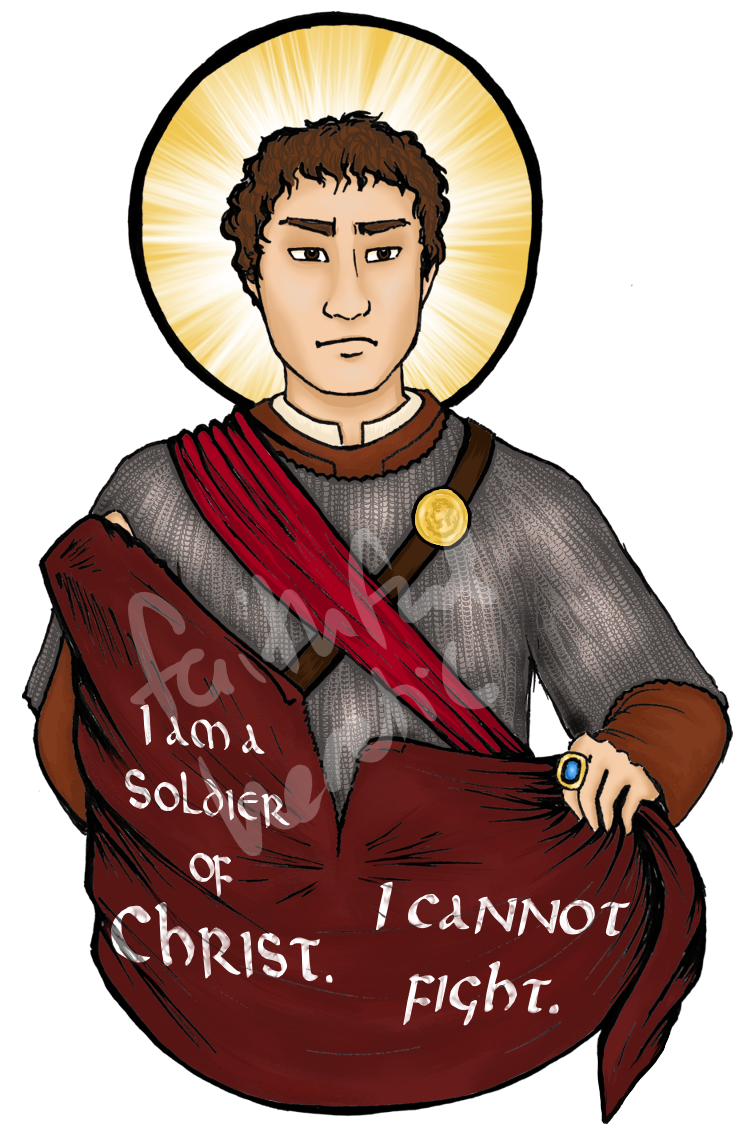Saint Martin of Tours
4th century, Roman Empire
Feast Day: November 11

Background:
St. Martin, like me, began life as a military brat. His father retired in northern Italy, and Martin was required to join the army when he became a young man. However, he became interested in Christianity as a child, against the wishes of his parents and their peers. Christianity was newly legal in the Roman Empire, but it was not widely accepted among people of their social class. Martin lived a long life, and was one of the first early Christians to become a saint without becoming a martyr, but it was a close one. He is most famous for his deeds as a young veteran, when he experienced a conflict between his Christian faith and his duties as a soldier. He became a conscientious objector, and was charged with cowardice. He was almost sent unarmed to the front of the army (at his own request), but the war ended before this could happen. His most famous deed is the one often depicted in iconography: he was moved by the sight of a naked beggar, and cut his heavy cloak in half to give to the beggar. He then dreamed that the beggar was actually Jesus in disguise. The remnant of his cloak was preserved as a relic.
The rest of Martin's life is somewhat complicated to our modern sensibilities. After leaving the army and becoming a monk, he became a powerful man in the church. He wielded his authority as you'd expect from a Roman military man, ordering the destruction of pagan sacred sites and expanding the authority of the institutional church throughout the borders of the crumbling empire. However, he was famous for showing mercy to Christian heretics in an era when some bishops were getting a taste for putting them to death, and he opposed the Emperor's involvement in matters of church doctrine and discipline. All in all, I'm happy to place St. Martin into the honored ranks of the Faithful Heretics: those who act with courage and integrity in the face of mainstream opposition. Politics are complicated, and it's often difficult for us to find heroes in the 4th century Church. But Martin, I think, was one of them.
Iconography
- "I am a soldier of Christ. I cannot fight.": This is supposed to be what Martin said when he was ordered to fight on behalf of the pagan Emperor Julian.
- Cloak: the most common attribute of Martin's iconography. He is said to have split his cloak in half to give to a beggar.